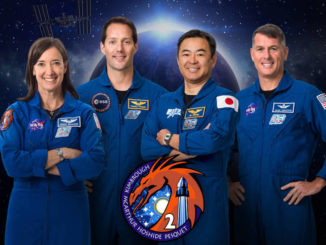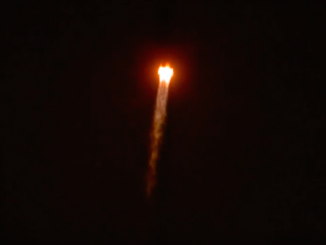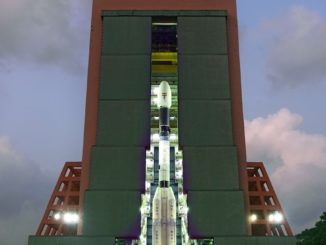Watch a replay of our live coverage of the countdown and launch of a SpaceX Falcon 9 rocket from Space Launch Complex 40 at Cape Canaveral Space Force Station, Florida. The Falcon 9 rocket launched the SES 18 and SES 19 geostationary communications satellites. Follow us on Twitter.
SFN Live
SpaceX launched two Falcon 9 rockets in a span of a little more than four hours Friday, a record-setting day that began with the launch of 52 Starlink internet satellites from California and ended with the sunset liftoff of two SES television broadcast payloads from Florida.
The back-to-back missions, just 4 hours and 12 minutes apart, set a record for the shortest span between two SpaceX Falcon 9 launches in the company’s history. It improved on the seven-hour turnaround between Falcon 9 launches accomplished by SpaceX last October.
The launch doubleheader record is a company best for SpaceX. With up to 100 missions planned this year and three operational launch pads, SpaceX’s record for turnaround time between Falcon 9 launches could be broken again in the coming months.
The back-to-back missions were SpaceX’s 18th and 19th flights of the year, and 211th and 212th flights overall by a Falcon 9 rocket.
The first launch of the day took off from Vandenberg Space Force Base in California northwest of Los Angeles at 12:26:40 p.m. PDT (3:26:40 p.m. EDT; 1926:40 GMT), with a Falcon 9 rocket carrying 52 satellites for SpaceX’s Starlink internet network.
Liftoff of a SpaceX Falcon 9 rocket from California’s Central Coast. There are 52 more Starlink internet satellites on-board.
This is the first of two SpaceX launches planned today, with another Falcon 9 counting down to liftoff from Florida tonight.https://t.co/J2D8HQBeVT pic.twitter.com/V6Vjszwawy
— Spaceflight Now (@SpaceflightNow) March 17, 2023
The mission from California, designated Starlink 2-8, was SpaceX’s 77th launch with the primary purpose of placing Starlink internet satellites into orbit. The Falcon 9’s first stage, tail number B1071, detached from the upper stage and descended to a drone ship west of Baja California for landing about eight-and-a-half minutes after liftoff, completing the reusable booster’s eighth flight to space.
The upper stage delivered the 52 Starlink satellites to a low-altitude orbit and released them 15 minutes into the mission. With the fresh satellites launched Friday, SpaceX has now sent 4,105 Starlink spacecraft into orbit, including test vehicles and prototypes. SpaceX currently has more than 3,700 active Starlink satellites in orbit, according to a tally by Jonathan McDowell, an astrophysicist and expert tracker of spaceflight activity.
SpaceX plans to launch thousands more Starlink satellites in the coming years to expand the network’s capacity to provide high-speed, low-latency broadband service around the world.
The Starlink 2-8 mission targeted Shell 2 in the first-generation Starlink constellation, which is spread into numerous orbital planes in five orbital groupings. The satellites in Shell 2 fly in orbits inclined 70 degrees to the equator roughly 350 miles above Earth.
See our Mission Status Center for our play-by-play updates of the Falcon 9 flight from Vandenberg.
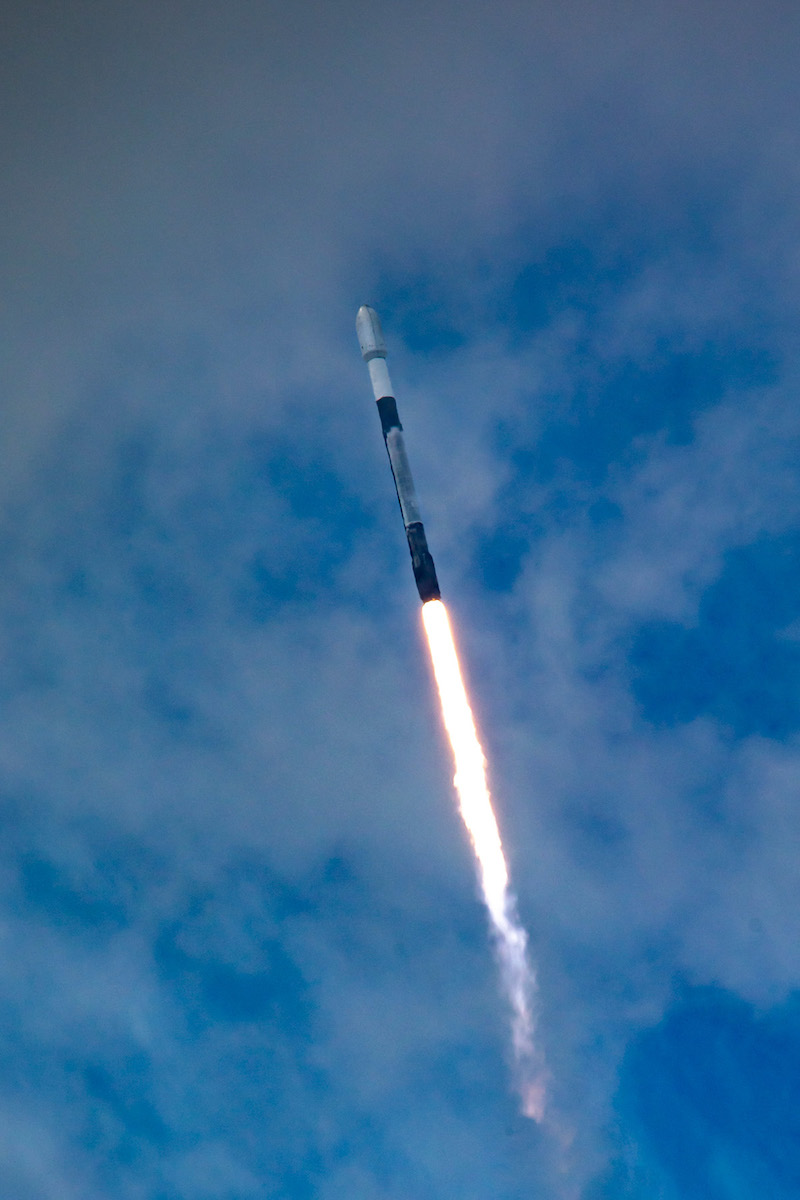
Four hours later, a different SpaceX team in Florida readied another Falcon 9 rocket for liftoff at 7:38 p.m. EDT (2338 GMT) with two SES television broadcasting satellites, continuing a multibillion-dollar program to clear C-band spectrum for terrestrial broadband.
The TV satellites were stacked one on top of the other inside the payload fairing of the Falcon 9 rocket when it took off a few minutes after sunset. With clear skies, local residents and tourists enjoyed spectacular views of the Falcon 9 as it climbed into sunlight, trailing an expanding plume of exhaust from its kerosene-fueled engines.
The Northrop Grumman-built SES 18 and 19 communications launched to kick off 15-year missions relaying C-band video and television programming for media networks and cable providers across North America.
After teams verified technical and weather parameters were all “green” for launch, the nine Merlin 1D main engines on the first stage booster flashed to life with the help of an ignition fluid called triethylaluminum/triethylborane, or TEA-TEB. Once the engines ramped up to full throttle, hydraulic clamps opened to release the Falcon 9 for its climb into space from pad 40.
The nine main engines produced 1.7 million pounds of thrust for about two-and-a-half minutes, propelling the Falcon 9 and and the SES 18 and 19 communications satellites into the upper atmosphere. Then the booster stage — tail number B1069 in SpaceX’s fleet — shut down and separated from the Falcon 9’s upper stage.
The booster extended titanium grid fins and pulsed cold gas thrusters to orient itself for a tail-first entry back into the atmosphere. The upper stage fired its single Merlin engine and jettisoned the clamshell-like payload shroud on top of the rocket, revealing the SES 18 and 19 satellites to the environment of space.
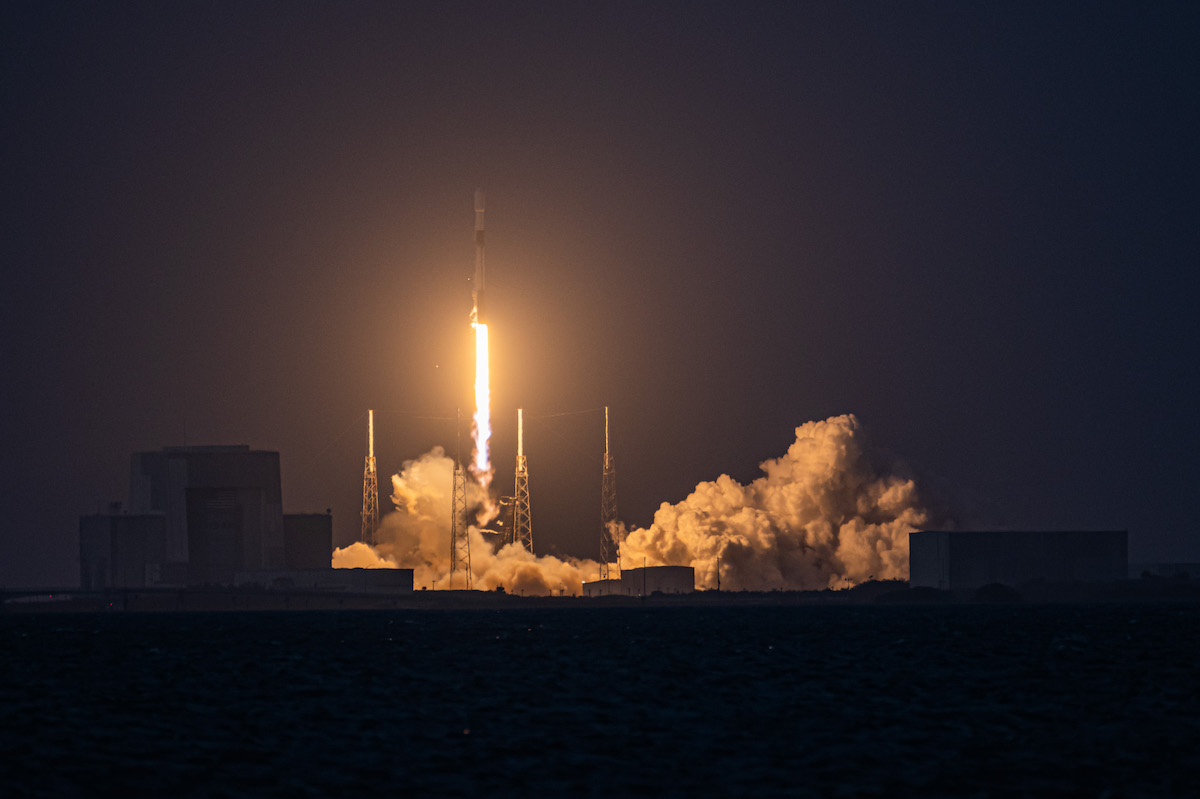
The Falcon 9 remained in view of launch watchers at Cape Canaveral for more than six minutes, thanks to good visibility at the Florida spaceport. The booster stage, upper stage, and the two halves of the payload fairing were briefly visible all at once from the ground, lit by the day’s waning sunlight to appear like moving stars across the dusk sky.
The booster reignited three of its engines for a braking burn, then lit its center engine for a final landing burn during vertical descent to the drone ship “Just Read the Instructions” parked about 420 miles (about 670 kilometers) east of Cape Canaveral. SpaceX confirmed touchdown of the reusable first stage B1069, competing its sixth flight to space.
The Falcon 9 aimed to release the SES 18 and 19 satellites into an elliptical “sub-synchronous” transfer orbit with an apogee, or high point, short of the satellites’ final 22,000-mile-high operating altitude in geostationary orbit. The lower-than-usual deployment orbit for a geostationary mission allowed the Falcon 9 rocket to lift both satellites on one mission, and give the Falcon 9’s reusable first stage booster enough reserve propellant to return to landing on the drone ship in the Atlantic Ocean.
In launch configuration, the two nearly identical satellites weighed 15,995 pounds (7,255 kilograms), according to a Northrop Grumman spokesperson. The lower satellite in the dual-payload stack, SES 19, weighed about 100 pounds more than the upper satellite because it carries structural components to directly connect the spacecraft together during the ride into orbit.
The Falcon 9 rocket’s upper stage ignited its Merlin Vacuum engine two times, first to place the SES satellites into a low-altitude parking orbit, then to raise the apogee of the orbit to a distance thousands of miles above Earth.
Liftoff of SpaceX’s second launch of the day, with a Falcon 9 rocket climbing away from Cape Canaveral carrying the SES 18 and 19 commercial TV broadcast satellites. https://t.co/BpMMht5np3 pic.twitter.com/Ic6z75og57
— Spaceflight Now (@SpaceflightNow) March 17, 2023
SES 18 separated from the launcher about 32 minutes after liftoff by firing a pyrotechnical device to release a clamp band connecting it with SES 19, which rode in the lower position of the dual-satellite stack. SES 19 separated from the Falcon 9’s upper stage about five minutes later, 37 minutes into the mission.
SES 18 and 19 will unfurl their solar panels and complete a series of post-launch checkouts, then use a hydrazine-fueled main engine to reshape its orbit from the elliptical, or oval-shaped, transfer orbit the Falcon 9 will put them in after Friday’s launch. The satellites will maneuver into circular geostationary orbits some 22,000 miles (nearly 36,000 kilometers) over the equator, where their speed will match the rate of Earth’s rotation, keeping them over the same location on the planet and providing a fixed coverage zone for their C-band broadcast antennas.
SES 18 and 19 are the fourth and fifth new C-band communications satellites to join SES’s fleet in the last nine months. The flurry of new C-band satellite launches stem from a 2020 order for six new spacecraft, including a spare, as part of a Federal Communications Commission decision to clear 300 megahertz of C-band spectrum for the roll-out of 5G mobile connectivity networks.
“This successful launch marks one of the last remaining milestones on our journey to clear a portion of the C-band, and we are incredibly grateful to Northrop Grumman, SpaceX, and all of our partners who helped make this plan a reality,” said Steve Collar, CEO of SES. “We are now on the home stretch in protecting our customers’ broadcasts while freeing crucial 5G spectrum and we look forward to successfully concluding our work well before the FCC’s December 2023 accelerated clearing deadline.”
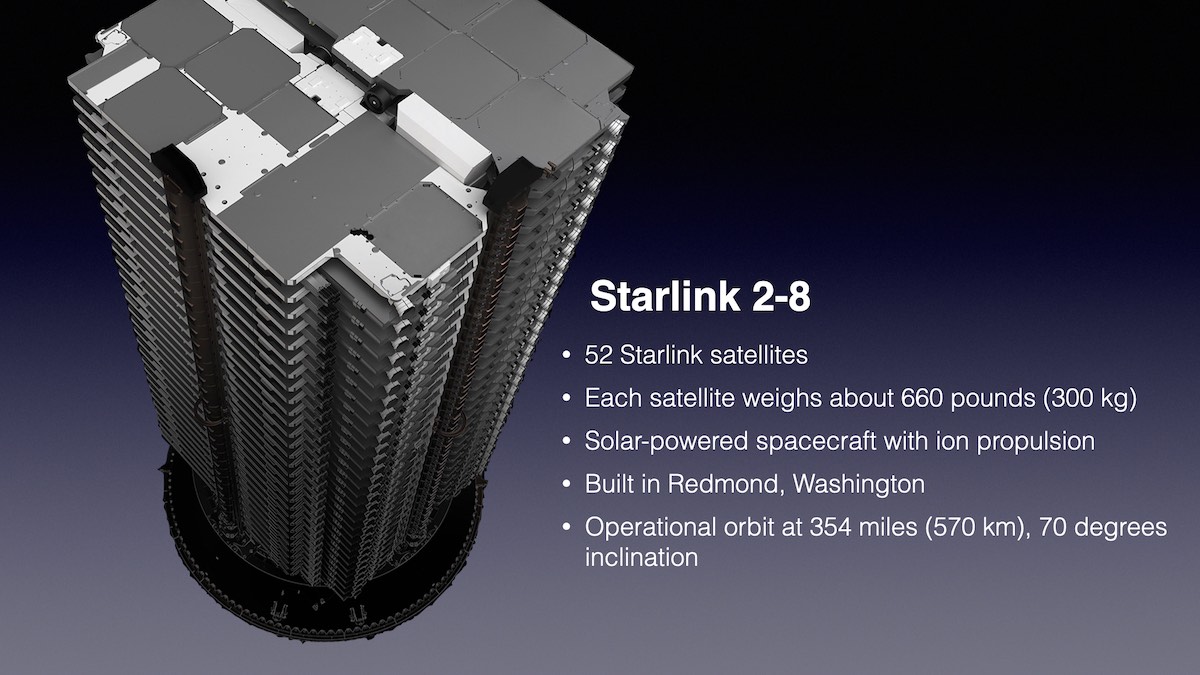
The new C-band satellites will operate in a narrower swath of spectrum, enabling the broadcast of digital TV services to nearly 120 million homes in the United States, while clearing the 300 megahertz of spectrum now assigned for use by 5G operators.
The FCC auctioned U.S. C-band spectrum — previously used for satellite-based video broadcast services to millions of customers — to 5G operators, which are paying satellite operators like SES through multibillion-dollar compensation agreements. Intelsat, another large television broadcast satellite operator, ordered seven new C-band satellites as part of the C-band clearing initiative.
SES launched the first new C-band satellite, SES 22, on a Falcon 9 rocket last June. Two more C-band satellites, SES 20 and 21, launched in tandem on a United Launch Alliance Atlas 5 rocket in October. SES ordered a spare satellite, SES 23, that the company does not plan to launch, pending a successful deployment of SES 18 and 19 on the next SpaceX mission, an SES spokesperson said.
The multi-satellite procurement by SES, along with launch services and reconfiguration of ground systems, represents a $1.6 billion investment by the company.
Falcon 9’s first stage booster comes back for landing on a drone ship parked between in the Atlantic Ocean between Bermuda and the Bahamas.
That’s two launches and landings today for SpaceX.https://t.co/BpMMht5np3 pic.twitter.com/rRLpSBtF3E
— Spaceflight Now (@SpaceflightNow) March 18, 2023
The SES 18 and 19 satellites, based on Northrop Grumman’s GEOStar satellite design, should be ready to begin commercial service in June to provide TV, radio, and data relay services across the United States. SES 18 will head for a position at 103 degrees west longitude, where it will replace the C-band payload on the SES 3 satellite launched in 2011. SES 19 will enter service at 135 degrees west longitude, co-located with the SES 22 satellite launched last year.
SpaceX plans three more Falcon 9 launches before the end of the month — two from Cape Canaveral Space Force Station and one from Vandenberg Space Force Base.
The next SpaceX mission is scheduled to lift off from Cape Canaveral on Friday, March 24, with a Falcon 9 rocket hauling into orbit another cluster of Starlink internet satellites. Another Starlink mission is tentatively set for launch March 30 from Cape Canaveral.
The next Space launch from Vandenberg at the end of March will carry the first group of demonstration spacecraft for the Space Development Agency, a Defense Department organization planning a future constellation of military missile tracking and data relay satellites.
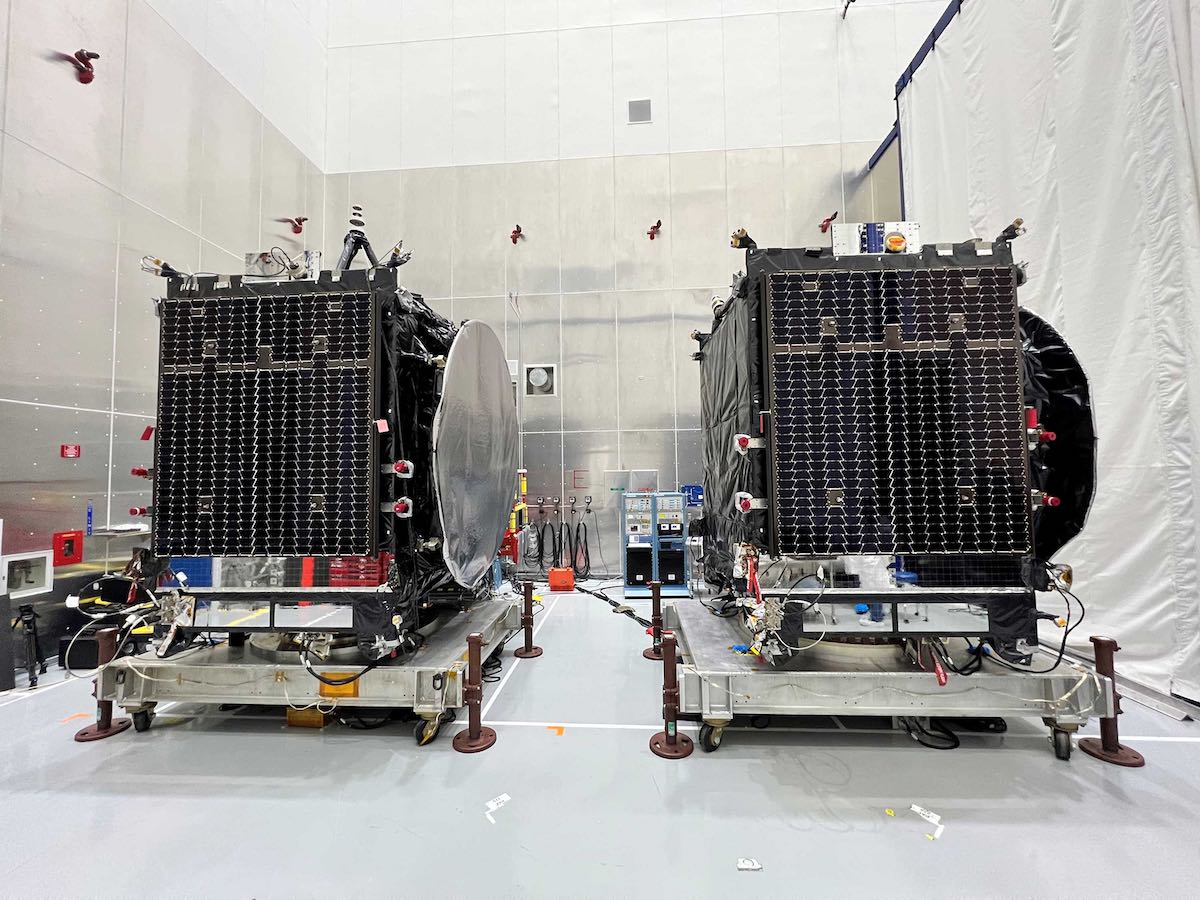
ROCKET: Falcon 9 (B1069.6)
PAYLOAD: SES 18 and 19 communications satellites
LAUNCH SITE: SLC-40, Cape Canaveral Space Force Station, Florida
LAUNCH DATE: March 17, 2023
LAUNCH WINDOW: 7:38-8:16 p.m. EDT (2338-0016 GMT)
WEATHER FORECAST: 80% probability of acceptable weather
BOOSTER RECOVERY: “Just Read the Instructions” drone ship
LAUNCH AZIMUTH: East
TARGET ORBIT: Sub-synchronous transfer orbit
LAUNCH TIMELINE:
- T+00:00: Liftoff
- T+01:12: Maximum aerodynamic pressure (Max-Q)
- T+02:32: First stage main engine cutoff (MECO)
- T+02:36: Stage separation
- T+02:44: Second stage engine ignition
- T+03:21: Fairing jettison
- T+06:36: First stage entry burn ignition (three engines)
- T+07:00: First stage entry burn ends
- T+08:17: Second stage engine cutoff (SECO 1)
- T+08:24: First stage landing burn ignition (one engine)
- T+08:45: First stage landing
- T+26:17: Second stage engine restart
- T+27:04: Second stage engine cutoff (SECO 2)
- T+32:15: SES 18 separation
- T+37:25: SES 19 separation
MISSION STATS:
- 212th launch of a Falcon 9 rocket since 2010
- 222nd launch of Falcon rocket family since 2006
- 6th launch of Falcon 9 booster B1069
- 181st Falcon 9 launch from Florida’s Space Coast
- 117th Falcon 9 launch from pad 40
- 172nd launch overall from pad 40
- 152nd flight of a reused Falcon 9 booster
- 9th SpaceX launch for SES
- 18th Falcon 9 launch of 2023
- 19th launch by SpaceX in 2023
- 14th orbital launch attempt based out of Cape Canaveral in 2023
Email the author.
Follow Stephen Clark on Twitter: @StephenClark1.

